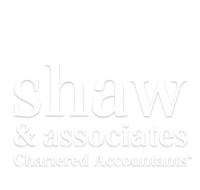Selling Across Provinces? A Plain-English Guide to GST/HST & PST
October 24th, 2025
Posted in: Tips & Insights

More Canadian small businesses are selling beyond their home province through your online store, services you bill for, and sales made through third-party platforms. That’s great for growth, but it also means navigating sales tax in multiple jurisdictions. Here’s a simple, practical roadmap to keep you compliant and cash-flow-friendly.
This CFIB article is a quick, high-level overview.
1) Know When You Must Register
If your business is carrying on commercial activity in Canada and exceeds the small supplier threshold (as defined by the CRA), you’re generally required to register for GST/HST. Some provinces also require separate PST/QST registrations even if you already collect GST/HST. Digital and out-of-province services can trigger registration earlier than you’d expect, so don’t wait until year-end to check.
Action: Review your last 12 months of sales monthly (a rolling check). If you’re approaching the threshold or you’re selling into PST provinces, speak to your accountant about registrations.
2) Apply the “Place Of Supply” Rules
For goods, tax is usually based on where the item is delivered (the customer’s shipping address).
For services and digital products, it’s often tied to the customer’s billing address or where the service is performed/used.
Here is a video describing this.
Action: Configure your invoicing or ecommerce platform to collect the correct tax based on customer location. Test a few sample invoices to confirm the right rate is being applied.
3) Marketplaces May Collect, but You Still Have Work to Do
Some online marketplaces and app stores are required to collect/remit certain taxes on sales they facilitate. That can simplify life, but it doesn’t replace your obligations.
Action: Get written confirmation of what the platform collects, how it reports it to you, and what appears on the customer’s receipt. Reconcile those reports in your books (don’t double-charge tax).
4) Invoice Correctly
A compliant invoice typically includes:
Your legal name and address
Invoice date and unique number
Customer name and address
Description of goods/services
Tax collected by type (e.g., GST/HST vs. PST/QST)
Your registration number(s)
Action: Add province-specific tax codes to your accounting system so reports separate GST/HST from PST/QST.
5) File and Remit On Time
Filing frequencies vary. Missing deadlines leads to penalties and unnecessary interest.
Action: Set calendar reminders and keep a separate bank sub-account for sales taxes you’ve collected so remittances don’t surprise you.
6) Automate and Document
Cloud accounting, ecommerce integrations, and location-based tax engines reduce errors. Keep documentation for shipments, customer addresses, and platform statements—your best defence in an audit.
Getting interprovincial tax right isn’t just compliance; it protects margin and credibility. If you’re expanding across Canada (or planning to), let an accountant review your sales map, platform settings, and filings before busy season. A one-hour checkup now can prevent a year of clean-up later.
Contact Shaw & Associates Chartered Accountants for accounting help you can count on. One complimentary meeting with us will put you and your business on a more profitable and positive path.

